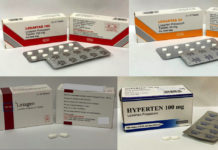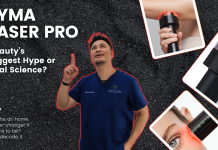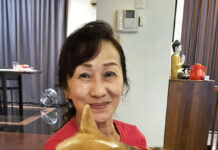Light based treatments for acne are very popular as they avoid the side effects associated with other treatments (e.g sun sentivity with Roaccutane) New lasers and lights to treat acne emerge all the time, as acne is a common and chronic problem, making many people confused and bewildered. I shall attempt to shed some light (pun intended) on topic.Light based therapies improve acne by many ways, namely by targeting the bacteria responsible for acne, P.acnes; the hair follicle infundibulum (top part of the hair follicle), or the sebaceous gland. Most, if not all lasers will heat up the skin!
These are the treatments available in the cosmetic dermatologist’s arsenal.
Diode Laser: Best results
Personally, the Diode laser remains my treatment of choice for acne. Diode lasers penetrate deep into the skin to heat up the sebaceous gland. Multiple studies have demonstrated that the diode laser is effective in acne reduction. A study by Ming Hih et all found that patients were acne free for a year after 3 treatments with the SmoothBeam from Candela, which is very impressive indeed for a light based therapy.In addition, it can also rejuvenate the skin, improve acne scars, and improve pore size.
Blue Light Red Light: which one to use?
Continuous blue light kills the P.acnes in the upper parts of the sebaceous gland, and is FDA approved for the treatment of acne. The downside is that frequent treatments are needed (at least 3x a week for 4 weeks for moderate acne). Moreover, the effects of blue light therapy are transient, and will require regular maintenance.Red light also affects the P.acnes in the sebaceous glands. It also causes some direct heating of the upper layers of the skin, and exerts some anti-inflammatory effects.
Studies have shown that combining both Red and Blue light therapies, performed once a week, each, is beneficial in the treatment of acne.
Photodynamic therapy: synergism at work
This involves combining blue light or IPL with a chemical (ALA) which increases the efficiency of the light therapy. Results from studies are very encouraging; however the procedure is associated with more side effects than light therapy or lasers, such as redness, flaking, crusting, and light sensitivity.
Nd-Yag/ Pulsed Dye Lasers: Promising Modality
The Pulsed Dye Laser is thought to kill P.acnes as well. A study conducted by Seaton et el found that patients treated with the Pulsed Dye laser (e.g. Vbeam from Candela) had significant improvements to their acne. The laserr is also excellent for treating those red acne scars that acne leave behind.
Intense Pulsed Light (IPL): modest results at best
With filters, IPL can emit light in the blue range. However, bacteria killing effects are modest due to the very short pulses of light. Furthermore, you may get burned. In my experience, I get better results and less side effects with Blue/ Red light, and the Lasers, and have hence moved away from using IPL for the treatment of acne.




















I have never hear about Blue Light Red Light: which one to use.To read this blog,it was a new experience for me.I think this is a great adult acne treatment or for any age.
There are many treatments offered to treat acne. The most effective <a href="http://www.puraskinacnetreatment.com.au/" rel="nofollow">acne treatment</a> I've used is the PuraSkin Total Acne Solution which really rid off my acne. It smoothen my skin.